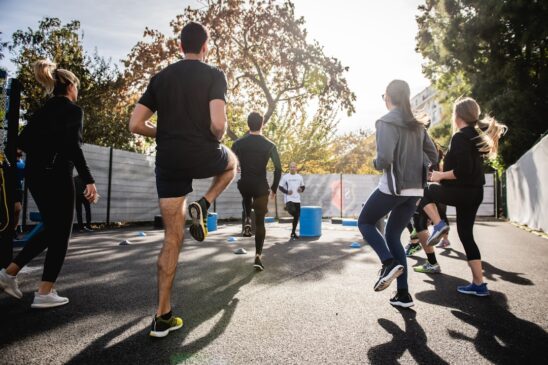The Ultimate Guide to Fitness: Unlocking Your Health Potential
Fitness is not just a buzzword; it’s a vital component of a healthy lifestyle. Whether you’re a beginner or a seasoned athlete, understanding fitness can help you to not only reach your goals but also maintain a sustainable and enjoyable workout routine. In this ultimate guide, we will explore various aspects of fitness, including workouts, nutrition, and lifestyle changes that can enhance your overall well-being.
Understanding Fitness
Fitness encompasses a variety of activities and elements that contribute to physical health, mental well-being, and overall quality of life. It includes:
- Cardiovascular Endurance
- Muscular Strength
- Muscular Endurance
- Flexibility
- Body Composition
Components of Fitness
To lead an active and healthy lifestyle, it’s essential to understand the different components of fitness:
1. Cardiovascular Endurance
Cardiovascular endurance is the ability of your heart and lungs to sustain prolonged exercise. Activities like running, cycling, swimming, and aerobic classes improve your cardiovascular health.
2. Muscular Strength and Endurance
Muscular strength is the amount of force a muscle can produce in a single effort, while muscular endurance is the ability to sustain repeated contractions over time. Strength training, such as weightlifting and bodyweight exercises, helps develop both.
3. Flexibility
Flexibility is the range of motion available at a joint. Stretching exercises and practices like yoga are essential for maintaining flexibility, which can prevent injuries and improve posture.
4. Body Composition
This refers to the proportions of fat and non-fat mass in your body. Achieving a healthy body composition involves a balanced diet and regular exercise.
The Importance of Regular Exercise
Incorporating regular exercise into your routine comes with a multitude of benefits:
- Improves cardiovascular health
- Enhances mental health by reducing anxiety and depression
- Promotes weight management and healthy body composition
- Increases strength and flexibility
- Boosts energy levels and improves sleep
Creating Your Personalized Fitness Plan
When crafting a fitness plan, consider your goals, preferences, and lifestyle. Follow these steps to create a sustainable program:
1. Set Clear Goals
What do you want to achieve? Some common goals include:
- Weight loss
- Muscle gain
- Improving endurance
- Enhancing flexibility
2. Assess Your Current Fitness Level
Before starting, evaluate your current fitness level. You can do this through physical fitness assessments, such as:
- 1-mile run
- Maximum weight lifted in one rep
- Flexibility tests
3. Choose the Right Workout Types
Incorporate a mix of the following into your routine:
- Cardio: Running, cycling, swimming
- Strength Training: Free weights, resistance machines
- Flexibility and Balance: Yoga, Pilates
4. Schedule Your Workouts
Consistency is key. Aim for at least 150 minutes of moderate aerobic activity or 75 minutes of vigorous activity each week. Break it down as follows:
- 3-5 days of cardio
- 2-3 days of strength training
- Daily stretching or flexibility exercises
Nutrition: Fueling Your Fitness Journey
Nutrition plays a significant role in supporting your fitness goals. Eating a balanced diet will help provide the energy and nutrients your body needs:
1. Key Nutrients
Ensure you’re getting:
- Carbohydrates: Primary energy source from whole grains, fruits, and vegetables
- Protein: Essential for muscle repair from sources like lean meats, legumes, and dairy
- Fats: Healthy fats from avocados, nuts, and olive oil for hormonal balance
2. Hydration
Staying hydrated is crucial for optimal performance. Drink water before, during, and after workouts. As a general guideline, aim for at least:
- 8-10 cups of water per day
- More if engaging in intense exercise
Staying Motivated and Overcoming Barriers
Maintaining motivation on your fitness journey can be challenging. Here are some strategies to help you stay on track:
1. Find a Workout Buddy
Exercising with a friend can make fitness more enjoyable and hold you accountable.
2. Track Your Progress
Keep a journal or use fitness apps to log workouts and celebrate achievements.
3. Mix It Up
Avoid boredom by trying new activities, classes, or outdoor workouts.
4. Set Realistic Expectations
Remember that progress takes time and be patient with yourself.
Incorporating Fitness into Everyday Life
Fitness doesn’t have to be confined to the gym. Here are some ways to incorporate activity into your daily routine:
- Take the stairs instead of the elevator
- Walk or bike for short trips
- Do bodyweight exercises during TV commercials
- Engage in active hobbies like gardening or dancing
The Role of Rest and Recovery
Recovery is just as important as training. Allow your body time to heal with:
- Rest days
- Active recovery activities like walking or gentle yoga
- Stretching and foam rolling after workouts
Conclusion
Fitness is a lifelong journey, one that enhances both physical health and mental well-being. By understanding the various components of fitness and implementing a balanced approach to exercise and nutrition, you can achieve your health goals and lead a more active life. Embrace your fitness journey with an open mind and heart, and remember to celebrate every step of the way!



